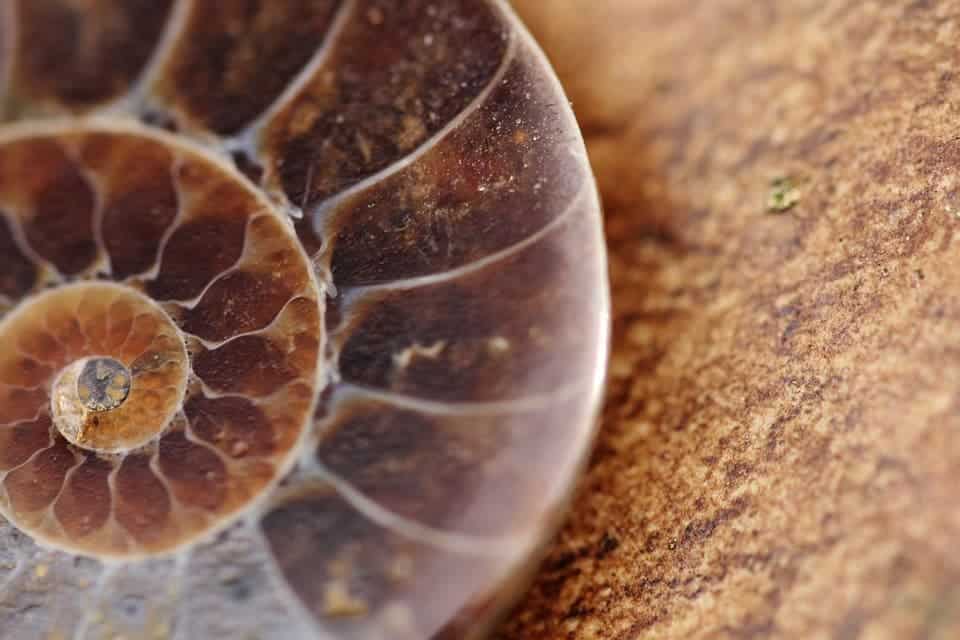Ammonite fossils are among the most common in the world, with their characteristic shape and chambered shell. But did you ever wonder what the deal is with those chambers?

Ammonites are a group of cephalopod animals that lived as swimmers in the shallow parts of the ancient oceans. They were extremely successful, emerging in the early Devonian 400 million years ago and surviving until the Cretaceous, 66 million years ago. Ammonites were predators, just like their relatives: octopus, squid, cuttlefish and nautilus.
In appearance, their shells were coiled and smooth, but on the inside, their have growth chambers separated by walls. The soft body of the creature occupied the largest segments of the shell at the end of the coil. In other words, the creature keeps moving on to the largest segment in the shell, while the others remain empty and can be filled with a light gas for buoyancy – like a submarine.
Many ammonite shells have been found with round holes once interpreted as a result of limpets attaching themselves to the shells. The shells themselves are made from calcium carbonate.

The majority of ammonoid specimens, especially those of the Paleozoic era, are preserved only as internal molds; the outer shell (composed of aragonite) has been lost during the fossilization process. Only in these internal-mold specimens can the suture lines be observed; in life, the sutures would have been hidden by the outer shell. The shell can also be pyritized, which makes for spectacular specimens. The empty chambers can also be filled with mineralizations in a geode-like fashion.
As mentioned before, ammonites are often found as fossils due to their extreme evolutionary success. They survived through several major extinction events, although often only a few species survived. Each time, however, this handful of species diversified into a multitude of forms. Ultimately, no ammonites survived the extinction event at the end of the Cretaceous.






